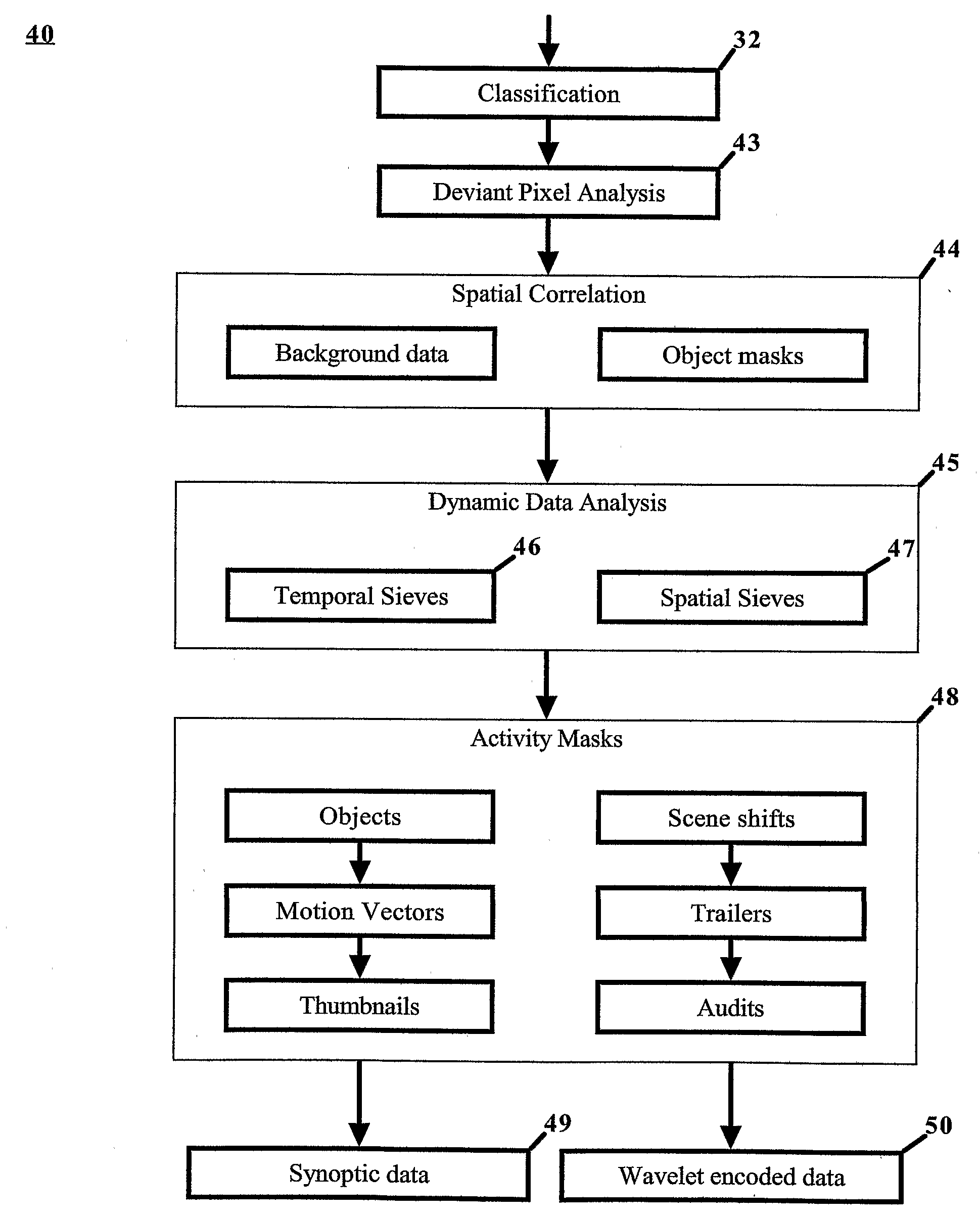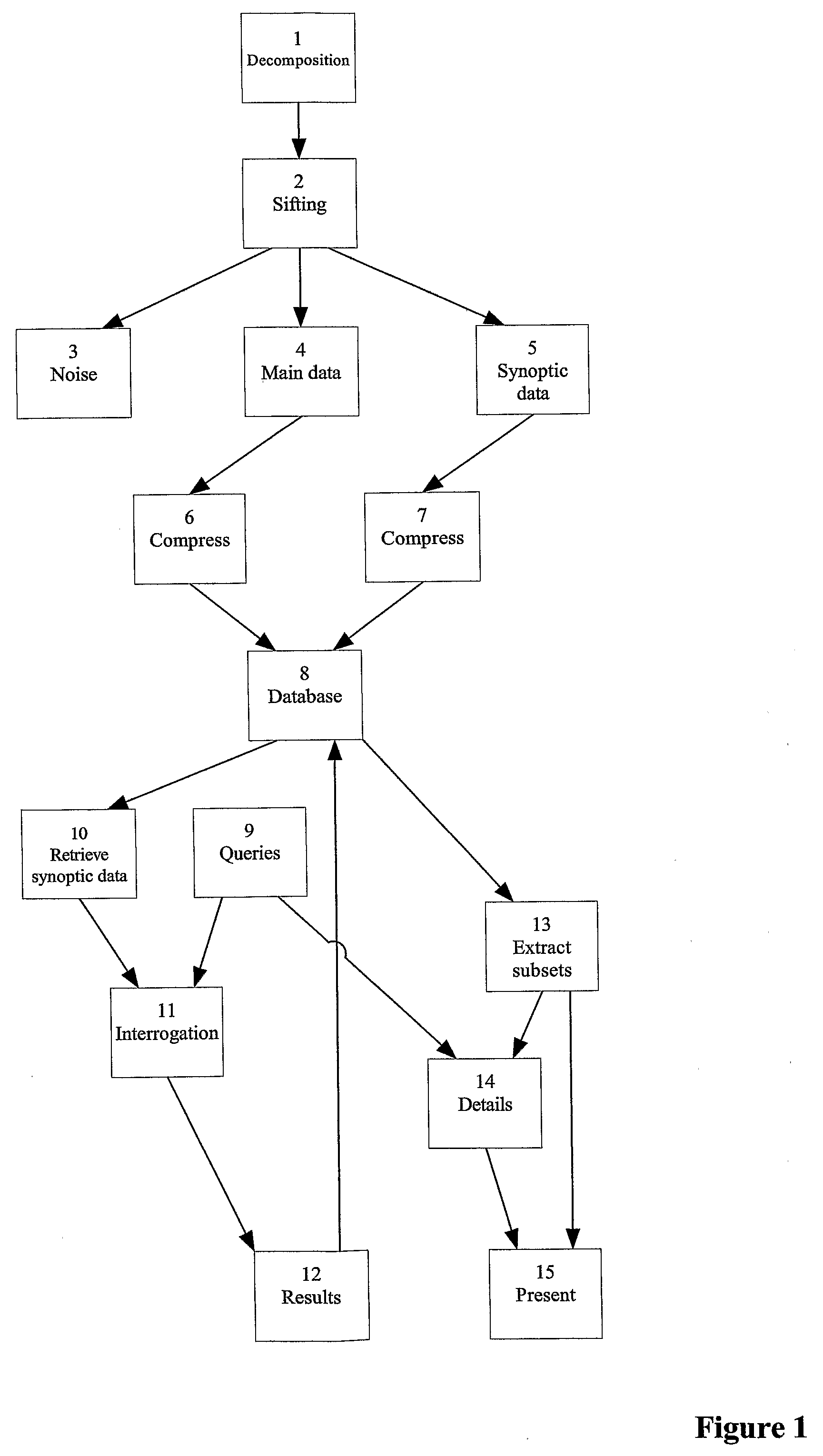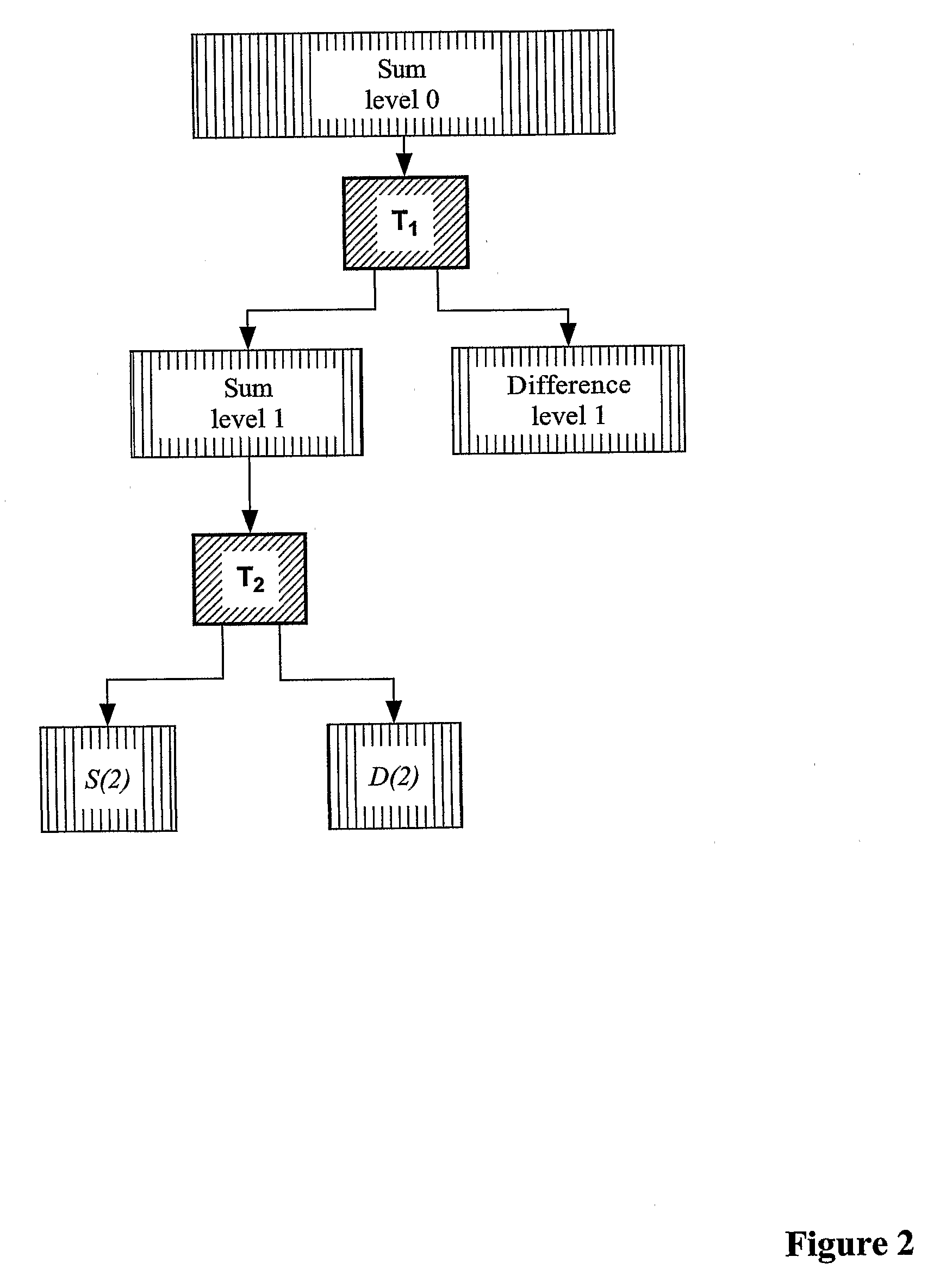Post-Recording Data Analysis and Retrieval
a post-recording and data technology, applied in the field of post-recording data analysis and retrieval, can solve the problems of difficult inter-frame comparisons under such circumstances, model dependence, and variation in scene lighting, and achieve the effects of not being realistic for real-time applications, and being difficult to segment real-time video streams
- Summary
- Abstract
- Description
- Claims
- Application Information
AI Technical Summary
Benefits of technology
Problems solved by technology
Method used
Image
Examples
Embodiment Construction
Section 1
Post Recording Analysis
[0073]FIG. 1 is a block diagram of the process in a general form. Blocks 1 to 8 comprise the “recorder” and blocks 9 to 15 comprise the “analyser”. Each of the individual blocks represents a smaller process or set of processes that may be novel or known. Sequential digitised data is input to the recorder and undergoes one or more pyramidal decompositions (Block 1). An example of such decomposition is a wavelet transform, but any pyramidal decomposition will do. The decomposed data is “sifted” through one or more “sieves” (Block 2) which separate different types of information content. An example is a noise filter, or a movement detector. The sieves may be applied once or many times in an iterative way. The results of the sifting processes are separated into 3 categories that depend on the purpose of the application: [0074] (a) “unwanted” data (Block 3), which is typically noise, but this category may be null if a lossless treatment or lossless data ...
PUM
 Login to View More
Login to View More Abstract
Description
Claims
Application Information
 Login to View More
Login to View More - R&D
- Intellectual Property
- Life Sciences
- Materials
- Tech Scout
- Unparalleled Data Quality
- Higher Quality Content
- 60% Fewer Hallucinations
Browse by: Latest US Patents, China's latest patents, Technical Efficacy Thesaurus, Application Domain, Technology Topic, Popular Technical Reports.
© 2025 PatSnap. All rights reserved.Legal|Privacy policy|Modern Slavery Act Transparency Statement|Sitemap|About US| Contact US: help@patsnap.com



